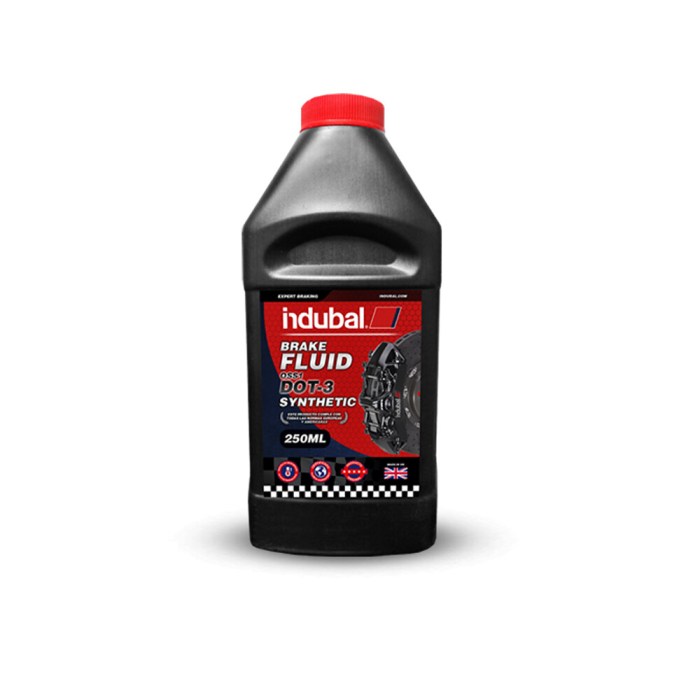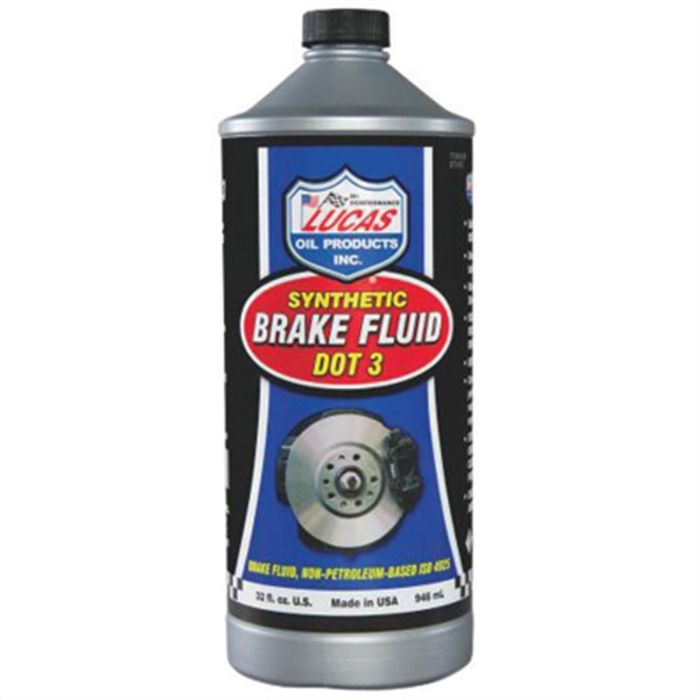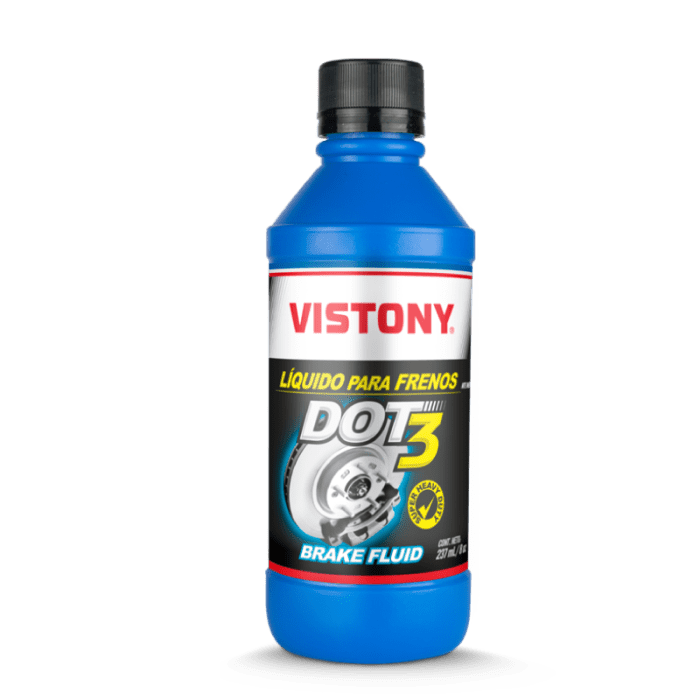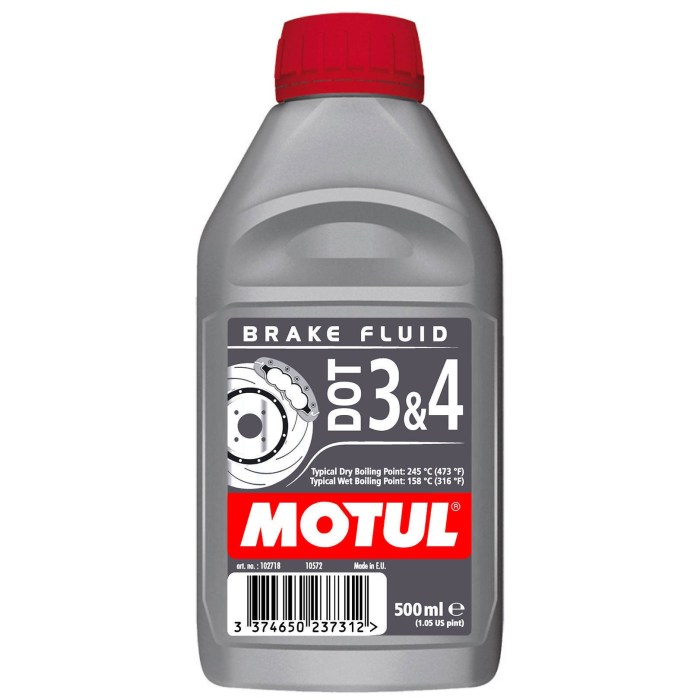Most vehicle manufacturers specify brake fluid that meets what specification – Most vehicle manufacturers specify brake fluid that meets DOT specifications, but what exactly does that mean? Brake fluid is a critical component of your vehicle’s braking system, and using the wrong type of fluid can lead to serious problems. In this article, we’ll explain the different DOT brake fluid specifications and why it’s important to use the right one for your vehicle.
Brake fluid is responsible for transferring hydraulic pressure from the master cylinder to the wheel cylinders or calipers. This pressure is what causes the brake pads to squeeze against the rotors or drums, slowing or stopping the vehicle. Brake fluid must be able to withstand high temperatures and pressures, and it must also be able to resist corrosion.
Different DOT brake fluid specifications have different performance requirements, so it’s important to use the one that is specified for your vehicle.
Brake Fluid Specifications

Brake fluid is a critical component of a vehicle’s braking system, and it is essential to use a fluid that meets the specifications set by the vehicle manufacturer.
Brake fluid specifications are established to ensure that the fluid can withstand the extreme temperatures and pressures generated by the braking system, and that it will not damage the system’s components.
There are several different brake fluid specifications, including DOT 3, DOT 4, DOT 5, and DOT 5.1. Each specification has its own unique properties and is designed for specific types of vehicles.
The table below compares the different brake fluid specifications:
| Specification | Boiling Point (Dry) | Boiling Point (Wet) | Viscosity | Compatibility |
|---|---|---|---|---|
| DOT 3 | 205°C (401°F) | 140°C (284°F) | 1,500 cSt at
|
Glycol-based |
| DOT 4 | 230°C (446°F) | 155°C (311°F) | 1,800 cSt at
|
Glycol-based |
| DOT 5 | 260°C (500°F) | 180°C (356°F) | 900 cSt at
|
Silicone-based |
| DOT 5.1 | 270°C (518°F) | 180°C (356°F) | 900 cSt at
|
Glycol-based |
DOT 3 and DOT 4 brake fluids are the most common types of brake fluid used in passenger vehicles. DOT 5 brake fluid is used in some high-performance vehicles, and DOT 5.1 brake fluid is a newer type of fluid that is designed to be compatible with both glycol-based and silicone-based brake systems.
It is important to use the correct brake fluid specification for your vehicle. Using the wrong type of brake fluid can damage the braking system and lead to a loss of braking power.
Vehicle Manufacturer Recommendations
Vehicle manufacturers specify brake fluid that meets specific specifications because they have determined that this fluid is the best for the vehicle’s braking system.
The brake fluid specification is typically listed in the vehicle’s owner’s manual. Some examples of vehicle manufacturers and the brake fluid specifications they recommend include:
- Honda: DOT 3 or DOT 4
- Toyota: DOT 3 or DOT 4
- Ford: DOT 3 or DOT 4
- General Motors: DOT 3 or DOT 4
- BMW: DOT 4 or DOT 5.1
Using brake fluid that does not meet the manufacturer’s specifications can void the vehicle’s warranty and lead to a loss of braking power.
Brake Fluid Compatibility: Most Vehicle Manufacturers Specify Brake Fluid That Meets What Specification

Brake fluid must be compatible with the vehicle’s brake system components. Using incompatible brake fluid can damage the system and lead to a loss of braking power.
The table below lists the different types of brake fluids and their compatibility with different brake system components:
| Brake Fluid Type | Compatible Components |
|---|---|
| Glycol-based | Rubber hoses, metal brake lines, steel calipers |
| Silicone-based | Silicone hoses, aluminum calipers |
It is important to note that glycol-based brake fluids are not compatible with silicone hoses or aluminum calipers. Using glycol-based brake fluid in a system with silicone hoses or aluminum calipers can damage the components and lead to a loss of braking power.
Brake Fluid Maintenance

Brake fluid should be checked and replaced regularly. The frequency of replacement will vary depending on the vehicle and the type of brake fluid used.
To check the brake fluid level, look at the reservoir in the engine compartment. The reservoir will have a minimum and maximum fill line. The brake fluid level should be between the two lines.
To check the brake fluid condition, look at the color of the fluid. New brake fluid is clear or amber. As the fluid ages, it will become darker in color. Dark brake fluid should be replaced.
Signs and symptoms of brake fluid contamination include:
- Dark or cloudy brake fluid
- Brake fluid that has a burnt smell
- Brake fluid that is leaking from the system
If you notice any of these signs or symptoms, the brake fluid should be replaced immediately.
Brake Fluid Safety

Brake fluid is a hazardous material. It is toxic and can cause skin irritation and eye damage.
When handling brake fluid, it is important to wear gloves and eye protection. If brake fluid comes into contact with your skin, wash it off immediately with soap and water. If brake fluid gets into your eyes, flush them immediately with water for at least 15 minutes.
Brake fluid should be stored in a cool, dry place. Do not store brake fluid in direct sunlight or near heat sources.
When disposing of brake fluid, follow the local regulations for hazardous waste disposal.
Commonly Asked Questions
What is the difference between DOT 3 and DOT 4 brake fluid?
DOT 4 brake fluid has a higher boiling point than DOT 3 brake fluid, which means it can withstand higher temperatures without boiling. This makes DOT 4 brake fluid a better choice for vehicles that are driven in high-performance or racing applications.
Can I use DOT 5 brake fluid in my vehicle?
DOT 5 brake fluid is not compatible with DOT 3 or DOT 4 brake fluid, and it should not be used in vehicles that are not specifically designed for it. DOT 5 brake fluid is made of silicone, which is not hygroscopic, meaning it does not absorb water.
This makes DOT 5 brake fluid less likely to boil, but it also makes it more susceptible to contamination.
How often should I change my brake fluid?
Brake fluid should be changed every 2 years or 30,000 miles, whichever comes first. However, if you drive your vehicle in severe conditions, such as in stop-and-go traffic or in mountainous areas, you may need to change your brake fluid more often.